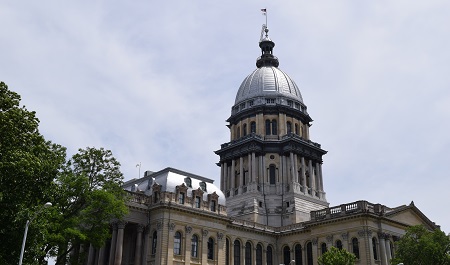It all goes hand in hand: you can’t spend money you don’t have through a formula that doesn’t exist. That’s why in order to fix our worst-in-the-nation funding formula, ensure schools open this fall, and put our education system on a path of renewed stability, we need to enact three bills:
1. Senate Bill 1, to fix our broken school funding system.
2. Senate Bill 6, to appropriate the money to pay for schools (among other things).
3. Senate Bill 9, to support the revenue needed to pay for the budget.
About SB1: The Funding Formula
SB1 is the school funding formula overhaul that passed the House and Senate on May 31. You can read the details here, but the upshot is that school leaders and advocates from across the state support the Evidence-Based Funding Model created in the bill as a once-in-a-generation chance to fix Illinois’s outdated and inequitable school funding system. The Governor has said he will veto the bill, even though all schools win and the framework aligns with recommendations of his own commission.
SB1 is the only funding formula that has passed the state legislature in 20 years. Multitudes of others have been filed but failed, including a recent one that would require at least six committee and floor super-majority votes to get as far as SB1. As a practical matter and as a lead publication has said, that last-minute attempt “appears DOA.”
About SB6: The Budget
SB6, which was enacted into law with the General Assembly’s override of the Governor’s veto, authorizes state spending for the fiscal year that just started. It includes increases in the education budget, but overall, the budget spends about $2.5 billion less than current spending levels. The education budget is consistent with the school funding structure in SB1. Almost all of the state’s appropriation to schools would flow through the new, integrated Evidence-Based Funding Model. That’s $6.7 billion. Without an Evidence-Based Funding Model in place to fund the budget, schools would be out that $6.7 billion.
The reality is that last year, the legislature essentially froze the General State Aid formula in place and sent new school funds through a temporary “equity grant.” Our main funding formula has been put on hold for over a year now. Last year’s budget took a small step toward improving school funding equity, but also created the situation we’re in this year where there is no active, functioning school funding formula. Both the Republican-drafted budget in SB2214 and the Democrat-drafted budget in SB6 appropriated school funding through a new evidence-based model. It is critical that SB1 be enacted so that schools get the funding they need to open their doors this fall.
SB9: The Revenue Bill
SB9 restores most of the income tax increase that lapsed two and a half years ago. This bill is the hardest part of the package, but one that 72 courageous and compassionate representatives voted to pass this week (71 representatives voted to override the Governor’s veto and enact it into law). No one likes tax increases, but the prevalent kick-the-can-down-the-road attitude in Illinois has led to years of spending without having money in the bank to pay for it. Many who voted for SB9 are fiscal conservatives who understand that the interest on the debt that’s growing every day will necessitate bigger tax hikes the longer we wait.
With $15 billion in unpaid bills and almost three years without a full budget, this is the critical piece of the package that will finally provide the stability that our schools need for long-term planning. Categorical payments are months delayed. General State Aid payments had been made on time, but a recent court ruling put in serious jeopardy the state’s ability to even continue making those payments in a timely fashion. And only 144 of over 850 school districts have 90-days cash on hand.
Without the revenue bill, there is no doubt in my mind that some schools would be unable to keep their doors open this year. The schools most impacted by this delayed payment cycle are the neediest districts.
The Conclusion
The budget only works if we have the evidence-based model in place. The evidence-based model only works if we have a budget to fund it. Schools can’t count on state payments for the evidence-based model or anything else unless we have revenue in place to pay for it. These three bills are all interconnected.
If your state senator or representative voted for SB9, say thanks! They stepped up and put kids ahead of politics. But while you’re at it, remind them that the job isn’t done until SB1 also becomes law. You can visit our action center to help get SB1 over the finish line here.





